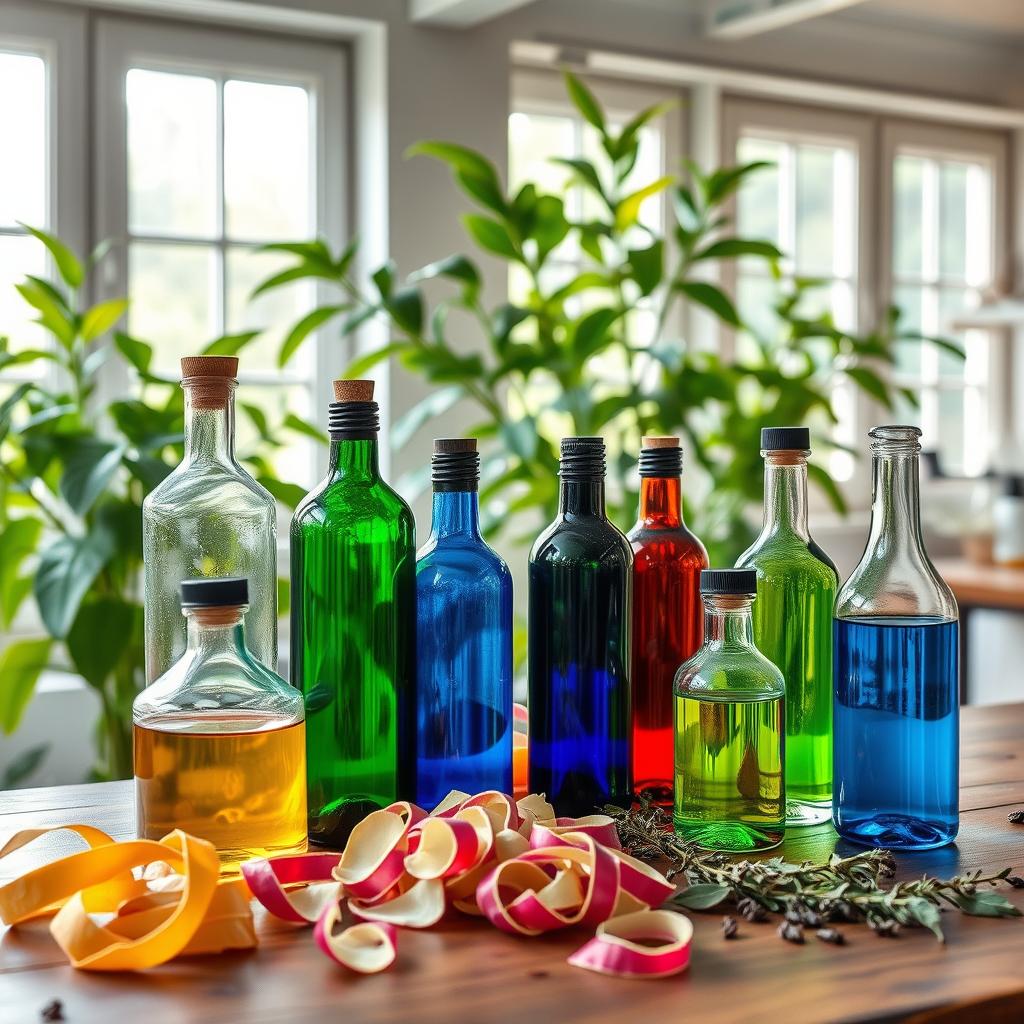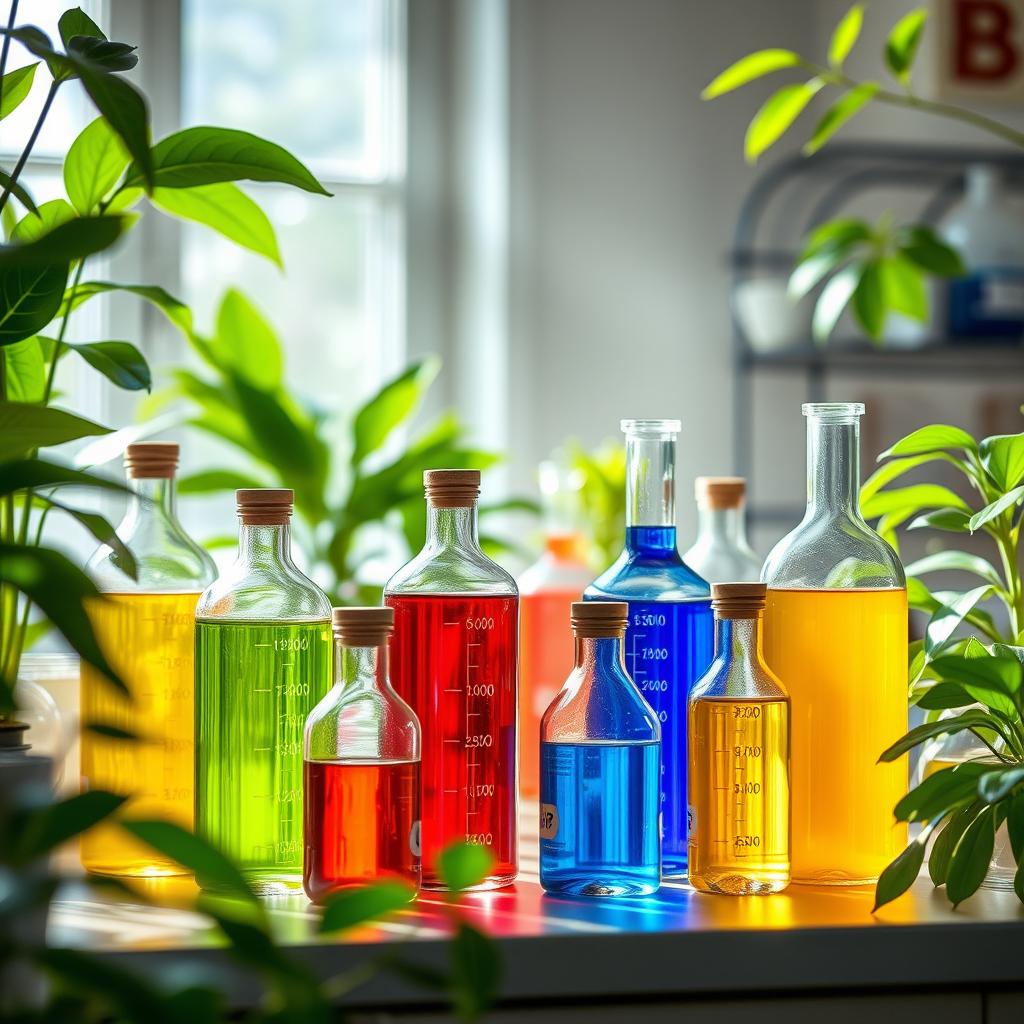What makes eco-friendly solvents a game-changer in modern chemistry? They can replace traditional solvents. This guide will explore the importance of green solvents and their impact on industries. Eco-friendly solvents are gaining popularity because they have less environmental impact and many benefits. As people become more aware of environmental protection, the demand for eco-friendly solvents grows. Using eco-friendly solvents is good for the environment and safer for those working with them. This guide aims to introduce you to green solvents. It covers their definition, importance, and key characteristics. Understanding eco-friendly solvents helps you make better choices about products and companies.
Click to use Silverigroup personal shopper services
Key Takeaways:
- Eco-friendly solvents are a safer alternative to traditional solvents
- They have a reduced environmental impact
- Eco-friendly solvents are becoming increasingly popular
- They offer numerous benefits, including reduced toxicity
- This beginner’s guide to eco-friendly solvents provides a comprehensive introduction to green solvents
- Eco-friendly solvents can transform various industries
Understanding What Eco-Friendly Solvents Are
Eco-friendly solvents, also known as green solvents, dissolve materials without harming the environment. They are made to lessen the harm of traditional solvents on our planet. These solvents are key in modern chemistry, offering a safer choice for many uses. Green solvents are gaining importance because they have many benefits. They are biodegradable, non-toxic, and have low volatility. These traits make them a great choice for companies wanting to lessen their environmental impact.
Click to buy citric acid from Silvairgroup
Definition and Basic Concepts
Eco-friendly solvents dissolve materials without releasing harmful chemicals. They come from natural or renewable sources, like plants. They are designed to break down easily in the environment, reducing pollution and harm to life.
The Importance of Green Solvents in Modern Chemistry
Green solvents are vital in modern chemistry, offering a safer, more sustainable option. They are used in many fields, including pharmaceuticals, cosmetics, and industrial manufacturing. Using these solvents can make industries more sustainable and responsible.

Key Characteristics of Environmentally Safe Solvents
Environmentally safe solvents have several important traits:
- Biodegradability: They break down easily in the environment, reducing pollution.
- Non-toxicity: They are safe and don’t release harmful chemicals.
- Low volatility: They evaporate slowly, reducing air pollution.
Click to buy frozen a grade beluga fish from Silverigroup
These traits make eco-friendly solvents a good choice for companies aiming to reduce their environmental impact and improve sustainability.
The Science Behind Green Solvents
Green solvents work because of their chemical makeup. They are made to be good for the planet, unlike harmful chemicals. These solvents come from nature, like plants and tiny living things, and break down easily.
Another important thing about green solvents is they are safe. They don’t have bad chemicals in them. This makes them okay to use in many ways. It also helps keep our air and water clean. Ethanol, methanol, and acetone are examples of these safe solvents. They come from things we can grow again. Some key traits of green solvents include:
- Low toxicity
- Biodegradability
- Renewable resources
- Low volatility

In short, green solvents are good for the planet because of their chemistry. Using them helps us live in a cleaner, healthier world. It’s a step towards a better future.
Common Types of Eco-Friendly Solvents
Eco-friendly solvents are gaining popularity because they are biodegradable. They are also great for cleaning. These solvents fall into three main categories: polar, non-polar, and bio-based. Polar solvents, like ethanol and acetone, are used in many industries. Some examples of polar solvents include:
- Ethanol
- 1-propanol
- Acetone
- Acetonitrile
- 2-propanol
- Methanol
These solvents are safe for the environment. They are often used for cleaning. Non-polar solvents are used in making medicines and cosmetics. Bio-based solvents come from renewable sources. They are becoming more popular. These solvents are good for cleaning and degreasing. Using biodegradable solvents can greatly reduce environmental harm.

In conclusion, eco-friendly solvents offer a sustainable choice. They include polar, non-polar, and bio-based types. By using these solvents, companies can help the environment and support a sustainable future.
Environmental Benefits of Using Green Solvents
Green solvents offer many environmental benefits, making them a great choice over traditional ones. They have a lower carbon footprint. This means companies can cut down on greenhouse gas emissions, helping our planet stay clean and healthy. Some of the key benefits of using eco-friendly solvents include:
- Reduced carbon footprint: Eco-friendly solvents produce fewer greenhouse gas emissions, contributing to a decrease in global warming.
- Biodegradability: Green solvents are designed to break down naturally, reducing the risk of environmental pollution.
- Improved air and water quality: By using eco-friendly solvents, companies can minimize the release of toxic chemicals into the air and water, resulting in improved overall environmental quality.
As companies move towards sustainability, the need for eco-friendly solvents grows.

Environmentally safe solvents are key in many industries, from manufacturing to pharmaceuticals. By choosing green solvents, companies can lessen their environmental harm. They also get a better reputation and help create a greener future.
| Benefits | Description |
|---|---|
| Reduced Carbon Footprint | Decrease in greenhouse gas emissions |
| Biodegradability | Natural breakdown of solvents, reducing pollution |
| Improved Air and Water Quality | Minimized release of toxic chemicals into the environment |
Popular Applications in Daily Life
Eco-friendly solvents, also known as green solvents, are gaining popularity in daily life. These sustainable solvents help reduce environmental harm and improve safety. They are used in many ways, including:
- Cleaning products: Green solvents are in all-purpose cleaners and disinfectants, making them better for the environment.
- Paints and coatings: They help lower VOCs (volatile organic compounds) and make indoor air cleaner.
- Personal care products: Green solvents are in cosmetics and skincare, reducing harm to the environment.
Green solvents are versatile and effective in reducing harm to the environment. As people learn more about their benefits, demand for them will grow.

In conclusion, green solvents are key in daily life, offering many benefits for the environment and health. By choosing products with green solvents, we can help create a more sustainable future.
| Application | Benefits |
|---|---|
| Cleaning products | Reduced environmental impact, improved safety |
| Paints and coatings | Reduced VOCs, improved indoor air quality |
| Personal care products | Reduced environmental impact, improved safety |
Safety Guidelines and Best Practices
Working with eco-friendly solvents requires following safety guidelines and best practices. This is to protect human health and the environment. Non-toxic and biodegradable solvents are safer than traditional ones. But, they still need careful handling and use. Here are some important safety tips for eco-friendly solvents:
- Wear protective gear like gloves and goggles to avoid skin and eye irritation.
- Make sure the work area has good ventilation to avoid inhaling fumes.
- Always follow the manufacturer’s instructions for use and disposal.
Biodegradable solvents are especially safe and good for the environment. They break down naturally, reducing pollution and harm to wildlife. Choosing non-toxic and biodegradable solvents helps reduce our environmental impact. It promotes a healthier and more sustainable future.

By following these guidelines, we can safely and effectively use eco-friendly solvents. This includes non-toxic and biodegradable solvents.
Comparing Traditional vs Eco-Friendly Solvents
There are two main types of solvents: traditional and eco-friendly. Traditional solvents have been around for years but harm the environment. Eco-friendly solvents, however, are made from natural ingredients and are environmentally safe solvents that don’t harm the planet. Eco-friendly solvents are biodegradable, non-toxic, and have low VOC content. They are also cost-effective because they can be reused and recycled. Traditional solvents, on the other hand, are expensive to dispose of and can harm health and the environment.
Eco-friendly solvents are used in many industries like cleaning, painting, and manufacturing. They are a versatile option that can replace traditional solvents in various contexts. Switching to environmentally safe solvents helps reduce environmental impact and supports a sustainable future. In summary, eco-friendly solvents are a better choice for those seeking sustainability. They have a low environmental impact, are cost-effective, and versatile. They are a great alternative to traditional solvents.

Making the Switch: Implementation Strategies
More people and businesses are choosing eco-friendly solvents. Switching to these solvents might seem hard, but it’s easier with the right steps. The cost of these solvents is higher, but they’re better for the planet and our health. When moving to eco-friendly solvents, start by assessing current solvent usage. Then, research eco-friendly alternatives and plan for gradual replacement. You might face challenges like finding good suppliers and training staff.
- Researching eco-friendly solvents thoroughly
- Talking to experts and suppliers
- Creating a step-by-step plan to avoid disruptions
By using these strategies, you can help the environment and save money. Eco-friendly cleaning solutions and paint thinners are worth the investment.
| Eco-Friendly Solvent | Benefits | Challenges |
|---|---|---|
| Eco-friendly cleaning solutions | Reduced toxicity, biodegradable | Higher cost, limited availability |
| Eco-friendly paint thinners | Low VOC, non-toxic | Compatibility issues, training required |
Conclusion: The Future of Green Solvents
As we wrap up our guide to eco-friendly solvents, the future looks bright. The introduction of green solvents marks a new era in sustainable practices. It’s changing how we work and think about chemistry. Using eco-friendly solvents leads to less carbon emissions and cleaner air and water. This shows the clear benefits of green chemistry.
Looking ahead, we’ll see more green solvent options. Bio-based and non-polar alternatives will keep growing. This will help us all make greener choices. The beginner’s guide to eco-friendly solvents we’ve shared will be key. It will help us move towards a more sustainable world.
FAQ: Beginner’s guide to eco-friendly solvents
What are eco-friendly solvents?
Eco-friendly solvents, also known as green solvents, are designed to be better for the environment. They are less harmful to humans and the planet than traditional solvents.
Why are eco-friendly solvents important?
They help lessen the environmental harm of chemical processes and products. These solvents are biodegradable, non-toxic, and have a lower carbon footprint. They are a more sustainable option.
What are the key characteristics of environmentally safe solvents?
Key traits include being biodegradable, low in toxicity, and having low volatility. They should also come from renewable sources. These features help minimize harm to the environment and human health.
What are some common types of eco-friendly solvents?
Common types include polar solvents like ethanol and acetone. There are also non-polar green alternatives and bio-based solvents from renewable sources.
How do eco-friendly solvents benefit the environment?
They have a lower carbon footprint and are more biodegradable. They also improve air and water quality by reducing pollution.
Where can eco-friendly solvents be used in daily life?
You can find them in cleaning solutions, paints, and coatings. They offer a sustainable alternative to traditional solvents.
What are the best practices for handling and using eco-friendly solvents?
Follow proper handling, storage, and disposal methods. Use non-toxic and biodegradable solvents and follow safety guidelines.
How do eco-friendly solvents compare to traditional solvents?
They have a lower environmental impact, are safer, and more sustainable. The differences depend on the solvent type and application.
What are some strategies for making the switch to eco-friendly solvents?
Consider costs, implement practical tips, and address challenges. This ensures a successful and sustainable switch to eco-friendly solvents.

